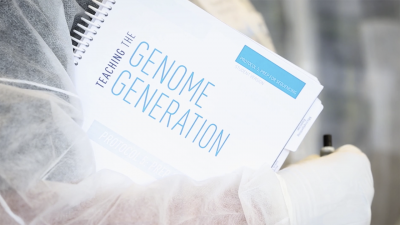Developing a Digital Training and Assessment Platform to Disseminate a Successful NIH-Supported College Preparation Model for Diversifying the U.S. Biomedical Workforce
-
Project Description
This research will result a new commercial product, HSTA Hatch, to disseminate 9-12 science education strategies developed by the West Virginia Health Sciences and Technology Academy (WV HSTA), which have been shown to diversify WV’s biomedical workforce and translate knowledge of health sciences to the local culture of health. HSTA Hatch will offer a digital training and assessment platform to support research universities and other STEM-education sponsors in replicating the HSTA workforce-development model in non-WV settings. Broad application of the model through the HSTA Hatch platform is expected to advance National Institutes of Health goals to improve the diversity of the nation’s biomedical workforce, improve minority health, and reduce health disparities in medically underserved populations.
-
Abstract
This Phase 1 SBIR project will design and test a digital training and assessment platform—HSTA Hatch—to help geographic regions outside West Virginia (WV) establish workforce development programs for grade 9-12 youth from populations underrepresented in biomedical research and other healthcare and STEM fields.
This work will be based on research and program delivery conducted over 27 years by the WV Health Sciences and Technology Academy (WV HSTA), an out-of-school-time science education model with proven success enhancing the diversity of WV’s biomedical workforce. It will be carried out by a small, woman-owned, economically disadvantaged business, Apis Creative (Grafton, WV). Apis has partnered with West Virginia University (WVU) and faculty from the University of Southern Mississippi, the University of Mississippi Medical Center, Northern Illinois University, and Northwestern University to carry out this project.
Specific aims are as follows:
Aim 1: Develop a digital platform for training research universities to found and operate HSTA-based college preparatory programs for high-school students from populations underrepresented in biomedical research, healthcare, and other STEM professions.
Aim 2: Develop a digital platform for assessing student outcomes in HSTA replication programs in comparison to outcomes of WV HSTA, which has shown to be successful.
Resulting products will be independently evaluated by the WVU Survey Research Center and a panel of reviewers representing potential sites for full-scale replication and WV HSTA alumni, staff, and leadership.
Team and Outlook The HSTA Hatch team has the necessary expertise in HSTA program replication and assessment, coaching and mentoring, training and materials development, and data collection and analysis to complete this project. Successful Phase 1 execution will set the stage for a Phase 2 project to field-test delivery of the HSTA Hatch platform through the initiation and foundation of full-scale HSTA replication programs at one or more partner sites.
HSTA Hatch offers NIH and NIGMS the opportunity to develop a promising model for improving biomedical workforce recruitment and retention in underrepresented populations in non-WV settings and support wider adoption of the model to address the biomedical-engagement challenges faced nationally by such populations.
Project Audience
Research universities, other STEM-education sponsors, and leaders in medically underserved communities
Subjects Addressed
STEM+M education, grade 9-12 college preparation






